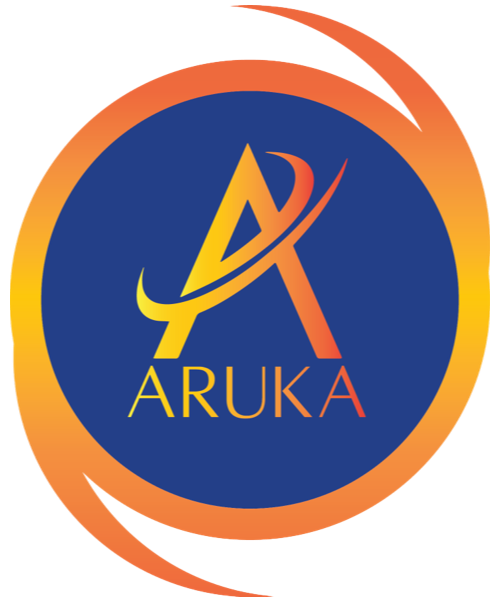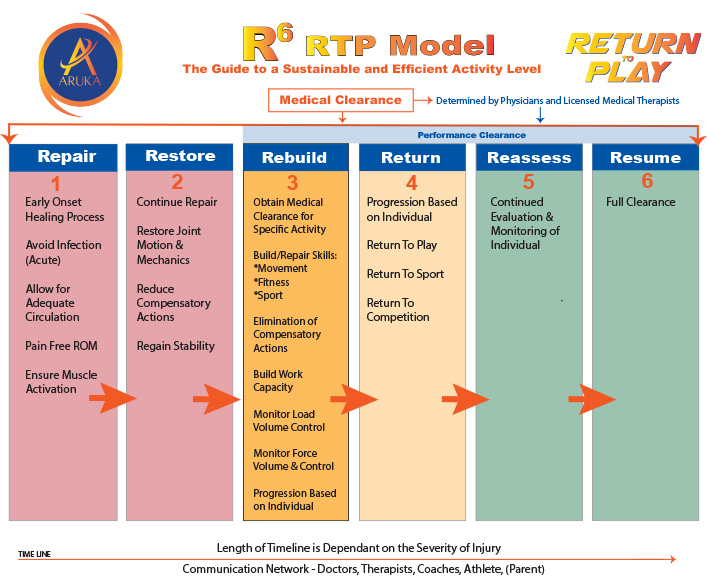RTP Protocols will be released in the Fall of 2025!
The Aruka Model of Return to Play (RTP) is a skill-based framework designed to ensure athletes regain and enhance their bio-mechanical proficiency while improving essential fitness abilities. This model emphasizes skill mastery or re-mastery, focusing on movement efficiency and injury prevention as athletes progress through recovery.
The Aruka R6 RTP Model:
This model integrates six progressive phases—Repair, Restore, Rebuild, Return, Reassess, and Resume—to guide athletes from early rehabilitation to full performance readiness. Note: The repair phase of the R6 model is driven by medical personnel only and is not included in any of these protocols.
Aruka’s Injury Specific RTP Protocols are tailored to address injuries affecting specific regions and anatomical parts of the body. These protocols provide a structured pathway for recovery, blending medical rehabilitation and performance training as healing progresses.
Key Highlights:
- Early rehabilitation focuses on the injured body part.
- Progression shifts from medical care to performance therapy and programming.
- Protocols include a combination of corrective and performance-based strategies, ensuring recovery aligns with the Aruka R6 RTP Model.
These plans are crafted for therapists, trainers, and coaches overseeing the RTP process, offering flexibility while adhering to key principles for safe and effective recovery.
- R6 Model Sequencing
Recovery and performance progress aligned with the Aruka R6 RTP Model phases. - Injury-Specific Insights
Detailed discussions on injuries and dysfunctions affecting specific anatomical regions. - Assessments and KPIs
Recommendations for evaluations and key performance indicators (KPIs) at each phase. - Injury Grades
Protocols account for distinctions in Grade 1, 2, and 3 injury severity. - Timetables for Recovery
Guidelines for typical recovery durations per phase. - Therapeutic Strategies
Common approaches therapists employ during various recovery stages. - Variable Integration
Guidelines for introducing elements like tempo, force, planes of motion, and surface types. - Movement Dysfunction Correction
Identification and resolution of compensatory patterns caused by the injury. - Exercise Recommendations
Phase-specific corrective, general, and sport-specific exercises. - Exit Markers
Criteria for transitioning from one phase to the next. - Layered Skill Development
Gradual integration of movement, fitness, and sport skills.
We offer 12 Injury Specific RTP Protocols affecting the following regions of the body.
- Foot
- Plantar Fascia
- Ankle
- Calf
- Hamstring
- Quadriceps
- Groin
- Knee
- ACL
- Hip/Pelvic
- Low Back
- Shoulder

